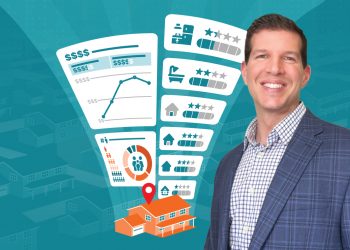RISMEDIA, February 26, 2009-Now that President Barack Obama’s $787 Billion Economic Stimulus Bill has been signed into law and will take effect on March 4, many American homeowners are anxiously wondering how this bill may affect the housing market. Despite primarily focusing on bolstering the economy by creating jobs and reviving spending, the bill includes steps to revitalize this critically important segment of the American economy. But what impact will the stimulus package directly have on your mortgage?
President Obama’s plan, named the American Recovery and Reinvestment Act, is designed to address two groups of homeowners: those who are current on payments but have high interest rates and not enough equity to qualify for refinance, and those who are at risk of losing their homes. The plan also intends to provide $200 billion in additional financial backing to Fannie Mae and Freddie Mac to increase money available for home lending.
These steps will directly help homeowners and new home buyers seeking a new mortgage, says Michael Isaacs, president and CEO of Residential Finance Corporation (www.residentialfinance.com), a nationwide mortgage lender specializing in FHA refinances. “The stimulus package aims to make money more readily available for lenders to help those who are currently in need,” says Isaacs. “The American Recovery and Reinvestment Act will directly help those seeking to refinance out of bad mortgages as well as those looking to become homeowners for the first time.”
The American Recovery and Reinvestment Act offers the following provisions:
– FHA Loan Limits – FHA loan amount limits will be raised to $729,750 for homes in high-cost areas. Areas with higher-valued homes will enjoy the many benefits of an FHA loan, such as low rates and easier qualification standards. The bill reinstates 2008 FHA loan limits, with a maximum cap of $729,750. The bill also provides the option, if warranted, to increase loan limits for any “sub-area”, i.e. an area smaller than a county. These limits will expire December 31, 2009.
– Home Ownership Tax Credit – A non-refundable tax credit of up to $8,000 will be available for buyers who purchase a home this year-before December 1, 2009–and who have not bought a house in the previous 3 years. This tax credit amount is based on 10-percent of the home’s purchase price, up to $8,000. To qualify, homeowners must keep their home for at least 3 years.
– Simplified Refinancing – Borrowers with less than a 20-percent equity stake in a traditional loan guaranteed by Fannie Mae or Freddie Mac (commonly referred to as “conforming” loans) may now refinance to up to 95-percent of their home’s market value without purchasing private mortgage insurance, which typically can increase monthly payments by hundreds of dollars.
– Neighborhood Stabilization – $2 billion in additional funding is also made available to create the Neighborhood Stabilization Program (NSP) to address the problems facing whole neighborhoods that are decimated by foreclosures. Funds can be used to purchase, manage, repair and resell foreclosed and abandoned properties. States and localities can also use these funds to establish financing methods for purchasing and redeveloping foreclosed properties.
– Reverse Mortgages – Loan limits on Home Equity Conversion Mortgage (HECM) – or “reverse mortgage” loans will rise to $625,500 until the end of 2009. Current limits, which mirror conforming loan limits, will be raised to open up reverse mortgage options for many seniors who may want to rely on home equity as a stable source of income.
– Low Income Housing – States will receive financing for construction and rehabilitation of low-income housing.
– Rural Housing Programs – 100-percent financing will be made available for rural housing loan programs.
– Energy Efficiency Benefits – Tax credits for energy-efficient upgrades will be extended through 2010.
– Foreclosure Protection – $75 billion program will be established to subsidize loan modifications for participating lenders to help many homeowners facing foreclosure.
“Rates are still at historically low levels and this is still a great time to refinance,” says Isaacs. “However, there has been much talk that banks and lenders will make it harder for borrowers to qualify for loans for both new and refinanced mortgages, especially for borrowers with less than perfect credit scores. I urge people contemplating a new mortgage or refinancing an existing mortgage loan to move quickly to lock in their best loan rate and options.”
For more information, visit http://www.residentialfinance.com/.










